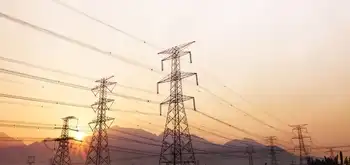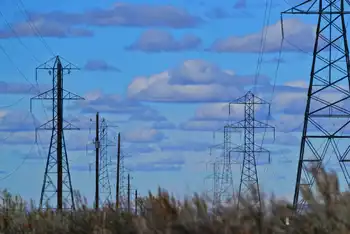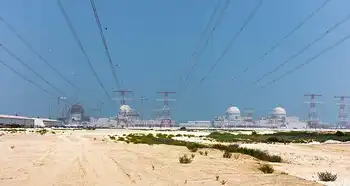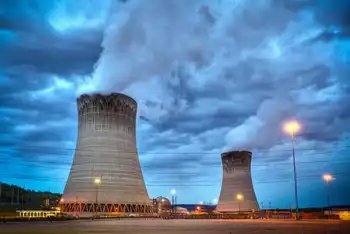Canada looking for central site to store radioactive waste fuel
OTTAWA, ONTARIO - Wanted: A community in Ontario, Quebec, New Brunswick or Saskatchewan willing to store millions of bundles of highly radioactive waste fuel from the country's 22 nuclear reactors. Forever.
The nuclear waste would be buried at this central site in mausoleum caverns up to a kilometre underground in hard rock, concludes a three-year study by experts submitted to the federal government.
The study was carried out by the Nuclear Waste Management Organization, an industry-led group specially created by federal law.
The proposed mausoleum would not actually be built for roughly 60 years, according to the study's master plan. It also could remain unsealed for centuries while scientists search for a better way to deal with radioactive waste, says the report.
A decision on a site is unlikely for at least a couple of years, according to officials here.
The federal government has been anticipating the recommendations as a way to help defuse public opposition to new nuclear power plants being considered to reduce emissions of carbon dioxide, the leading greenhouse gas formed by burning coal and oil to make electricity.
Anti-nuclear campaigner David Martin of Greenpeace said polls suggest many Canadians instead want nuclear power phased out, a move that would stop the steady rise in nuclear waste that must be managed.
"I think the federal government is setting the scene for a huge social confrontation on nuclear waste disposal," Martin said in an interview.
Two earlier federal waste disposal studies rated the granite-bound Canadian Shield as the only geological formation stable enough for millennia of storage. But the organization report says other parts of the country could host a nuclear mausoleum because they are located on sedimentary Ordovician rock that is also low-risk for fractures and underground water seepage.
Extending the geological criteria brings in non-Shield areas in Ontario including London, Hamilton-Niagara, Windsor-Sarnia and a swath from Kitchener-Waterloo up to Barrie.
Almost 90 per cent of Canada's nearly two million bundles of waste nuclear fuel is currently stored at Ontario's Pickering, Darlington and Bruce power stations, mostly in concrete and metal casks inside ordinary sheds. The master plan says the waste will remain at these sites for at least the next 30 years. Depending on public opinion, the bundles then might be moved to temporary storage in a centralized shallow facility for the following 30 years.
Spent fuel, expected to double over the 40-year reactor lifetimes, is dangerously radioactive for dozens of centuries.
Federal law forces Ontario Power Generation, Quebec Hydro and other producers of waste fuel to make annual contributions to a fund to cover the costs of long-term radioactive waste management, estimated at $24 billion in the study. The fund now contains $770 million.
The federal government must respond to the master plan for a drawn-out approach the organization calls Adaptive Waste Management. Ottawa can still opt for other ideas the report rejects, including leaving the waste dispersed at reactor sites, or building a central repository on the surface.
Once the federal government makes its choice, the organization will search for an eventual site or sites.
"In the interests of fairness, we intend to focus within the provinces that are directly involved in the nuclear fuel cycle — Ontario, New Brunswick, Quebec and Saskatchewan (where uranium is mined)," the report says.
Organization president Elizabeth Dowdeswell, former head of the United Nations environment program, said recently, "The issue that really gets people excited is where it's going to happen."
She said it is reasonable to expect to find a community willing to host a central mausoleum because that's happened in Finland and Sweden.
In the mausoleum that's proposed, steel-and-copper capsules would each hold 324 bundles of waste fuel. The containers would be designed to last at least 100,000 years and be sealed in underground caverns behind water-resistant clay barriers.
Related News

California Gets $500M to Upgrade Power Grid
CALIFORNIA - California has recently been awarded over $500 million in federal funds to significantly improve and modernize its power grid. This substantial investment marks a pivotal step in addressing the state’s ongoing energy challenges, enhancing grid resilience, and supporting its ambitious climate goals. The funding, announced by federal and state officials, is set to bolster California’s efforts to upgrade its electrical infrastructure, integrate renewable energy sources, and ensure a more reliable and sustainable energy system for its residents.
California's power grid has faced numerous challenges in recent years, including extreme weather events, high energy demand, and an increasing reliance…




